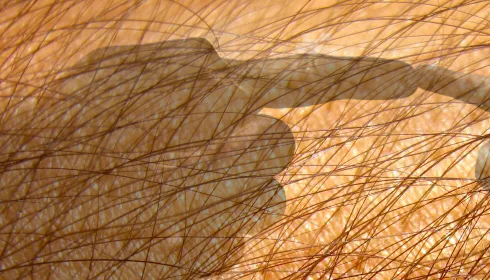
Study challenges conventional wisdom that touch sensitivity uniformly declines with age
A team of researchers including Dr. Jean-Marc Aimonetti from the Research Centre in Psychology and Neurosciences in Marseille, France, conducted a recent study that challenges the conventional wisdom that touch sensitivity uniformly declines with age. 96 right-handed female volunteers between the ages of 20 and 75 were the subject of the study by researchers including Dr. Jean-Marc Aimonetti from the Research Centre in Psychology and Neurosciences in Marseille, France. The researchers tested skin sensitivity in three areas: the hairless tip of the right index finger, the right forearm, and the cheek, both of which are typically covered with fine hair.
In the first experiment, participants used their index finger to discern grooves on plates, measuring their ability to detect differences in groove widths. This test confirmed that sensitivity in the index finger decreased with age, reflecting a decline in mechanoreceptor function in hairless skin.
In the second experiment, researchers applied monofilaments of various forces to the participants' skin to determine sensitivity thresholds. Interestingly, the index finger showed a decline in sensitivity with age, but the cheek and forearm regions showed no such decline. For instance, the detection thresholds remained stable across age groups for the forearm and cheek, suggesting that hair-covered areas maintain their sensitivity to touch throughout life.
Dr. Rochelle Ackerley, co-author of the study, emphasised the importance of hair in preserving touch sensitivity. In addition to protecting the skin, hair serves as an antenna to transmit mechanical stimuli, potentially explaining why hairy areas maintain sensitivity despite ageing.
The study underscores the social and biological significance of touch in human life, highlighting its role in releasing natural opioids, oxytocin (the bonding hormone), and neurotransmitters like dopamine and serotonin. These chemicals contribute to well-being and emotional health, making touch an essential aspect of human interaction and comfort.
The findings suggest practical implications for maintaining skin sensitivity as individuals age, such as avoiding extreme temperatures, pollutants, and negative lifestyle factors like alcohol and tobacco. By preserving skin health, individuals can potentially retain sensitivity in crucial areas like the cheeks, contributing to overall well-being and social connectedness throughout their lives.
“Although our hands are essential for touch, we receive caresses from others more on our hairy skin. This so-called affective touch actually increases with age, and preserving this sensitivity would make sense, as we are social animals,” said Aimonetti’s colleague, Dr. Rochelle Ackerley, the second corresponding author.
“Hair is our friend. It protects us from bacteria and tells us which way the wind is blowing. It's not for nothing that we have hair in the most sensitive areas,” explained Aimonetti.
“Studies show that people exposed throughout their lives to thermal environmental extremes, such as the cold for soldiers or the heat for bakers, lose more tactile sensitivity. We can also avoid negative lifestyle factors such as alcohol, tobacco, and sun bathing, which damage the skin, as well as other factors such as pollution,” said Ackerley.